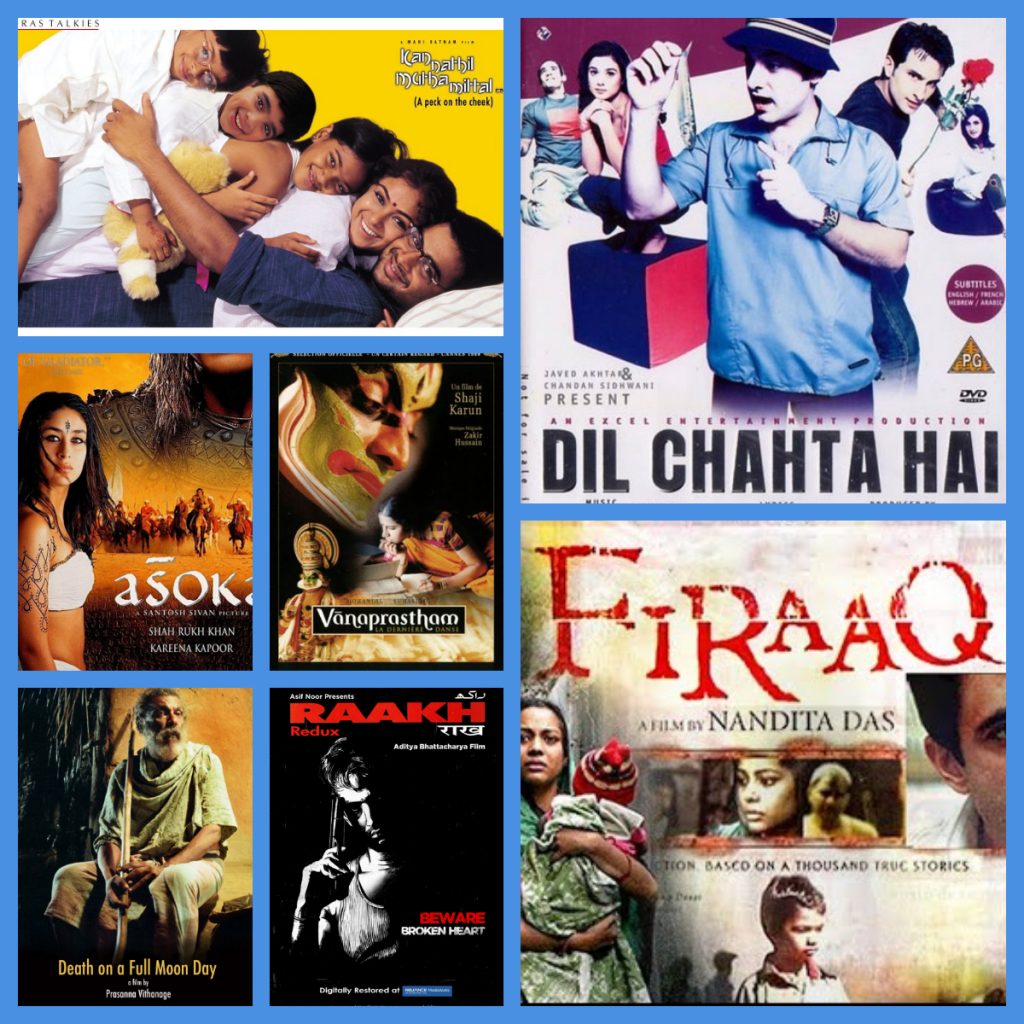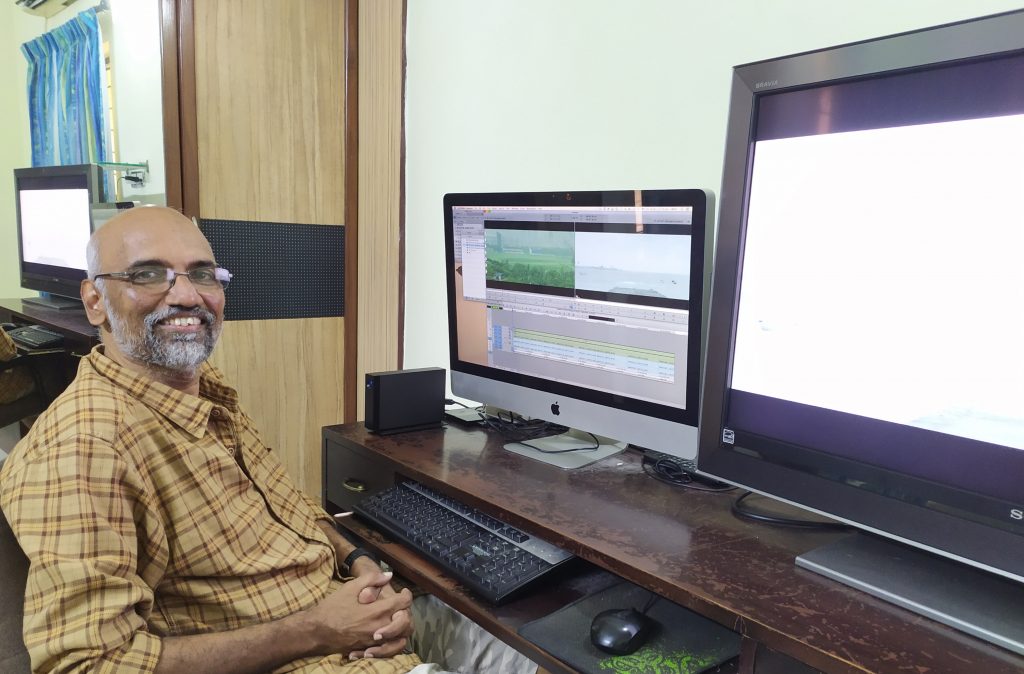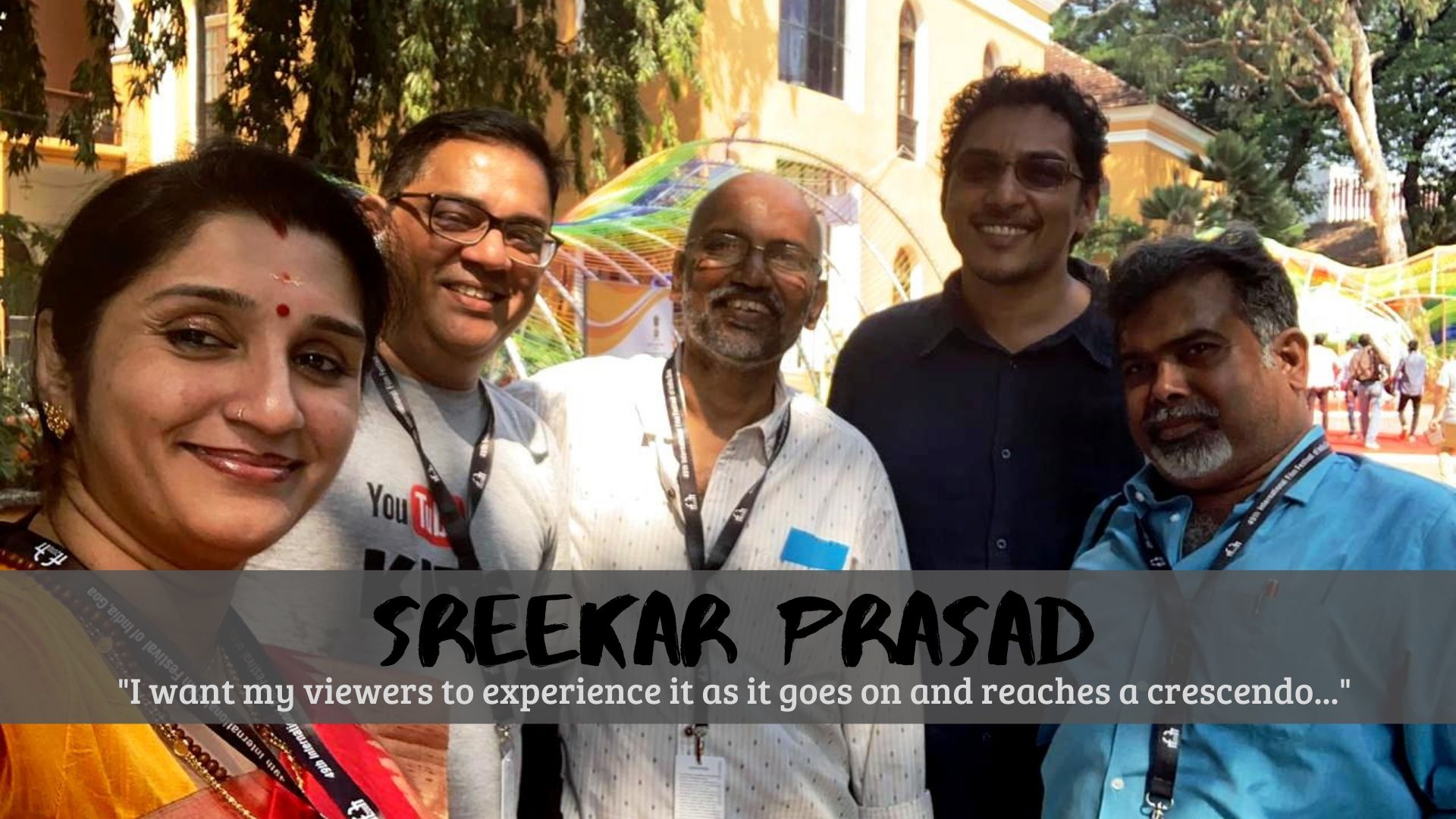When Sreekar Prasad, the ace film editor, agreed to talk to me for my blog, I was totally baffled. I have grown up drooling at his work, from the time I bunked school to watch ‘Raakh’ till I gaped in awe at the visual opulence of ‘Ashoka’, from the understated poignancy of ‘Vanaprastham’ to the coming of age with ‘Dil Chahta Hai’ to the wrenching realism of ‘Firaq’ – he has been an icon all the way.
And now, here he is, and I couldn’t figure out what to ask!! Shucks…
I met him for a brief while at the IFFI last year, when my friends Deepti and Sanjeev Sivan introduced me to him. That’s Deepti taking the selfie in the image above, with Sanjeev by her side, and Sreekar in the middle. With me is our editor Soni.
That chance encounter left me wondering how he manages to sustain his simplicity and friendly, amicable nature despite winning 8 National Awards. How is that connected – you might ask ! But I have seen people go bonkers with just one nomination.
Anyways, I called him recently, he agreed for the interview, and before talking to him again, I spent a few days going through his website and some of his you tube interviews. Frankly, I was overwhelmed with this opportunity, wondering how to make the best use of it.
Finally, I did manage to reach a (kind of) conclusion.
What if I ask the eight times national award winning film-editor about documentary storytelling and its progression into feature films? He would probably be the best person to cross the bridge between these two apparently different visual narratives. At least one of his national awards is for a documentary – Naukachritiamu (in 1996).
That apart, I have always felt, right from my early years in the industry, that editing is like a language; cuts and dissolves and fade outs and other transitions feel like punctuation; like we use metaphors and other figures of speech while writing, editors use storytelling tools like ramping, cross-fades, slow motions, motion blurs and so on. I love to imagine that editors write their stories in a language that uses audio-visual alphabets.
There is a grammar and syntax to this craft and this could be my chance to better understand it from a master craftsman.
“It’s all about telling an engaging story.”
For Sreekar Prasad, by his own admission, the engagement of the viewer is the most important thing in any form of visual presentation, be it a documentary or a feature film. So when he is editing either, he looks at it as creating an ‘immersive’ experience.
His trick is to ” Reveal the story slowly – do not be upfront.”
Quoting him, “I try and keep the narrative in such a way that you get more and more sucked into the world of the story.”
Yet another confusion, and guilt-complex, that I always had, was about creating fiction like ‘sequences’ in documentary storytelling. A fan of realism right from the times of Dziga Vertov till Warner Herzog and countless others after that – this NGC and now Netflix like school of fictional ‘sequencing’ has always felt like a shift from the realistic premise of the documentary.
I had to ask Sreekar Prasad about that.
The nature of sequencing, of course, depends on the nature of the documentary.
For instance, if it’s about a particular instrument or object – that sequencing will be very different – since it will only be talking about that particular aspect. “So in that case, there is nothing more to reveal. So if that is the case, we will stick to the basics and make it very descriptive. But even while doing that, pacing and rhythm of the shots have to be carefully decided”
Sreekar Prasad is a stickler when it comes to craftsmanship.
He maintains that every shot or sequence has a particular interest value for the viewer. For an editor, the challenge is to find the right links, pace and rhythm that sustains the interest. The shot sequencing has to be perfectly crafted for that.
I asked for an example – from his own work. He cited a documentary he edited a few years back, for Prasanna Vithanage – from Srilanka.
The film, ‘Silence in the Courts’ was about a scandal – about women abused by a Judicial Magistrate. Prasanna used interviews, and fictionalized the travel of a particular girl, going to seek help from the magistrate because her husband got arrested. How he tries to molest her and abuse her was the story.
Here’s the documentary.
Please take time out to watch…it’s 55 minutes, but it’s gripping all the way.
Spoiler alert; if you want to enjoy the documentary, then do not read what’s written below before watching it. That would be almost like knowing the end-sequence of a murder mystery before actually reading it.
And then, at the finale, the judicial stand on the case gets revealed.
This particular magistrate was bailed out by the Chief Justice of the country – he was just sacked and not punished. But by the time you reach that denouement, you have already started ‘belonging’ to the emotions of the abused woman, and started ‘feeling’ for her.
So her fate, the injustice, hits you hard. That’s the trick – mission accomplished.
That’s all for now, but that’s not all !
I also asked Sreekar Prasad about how he approaches a new film – his entire process of going about the ‘edit’. His responses involve feature films, as well as documentaries.
He shared a few work-lessons that I will cherish for long, and employ as much as I can.
Let me give you a brief sample here.
That’s one helluva bunch of practical advice coming from someone who has spent a lifetime creating ‘spunk’ in visual storytelling; there’s much more in store. Just give me some time to put it all together; just a couple of days.

In the meanwhile, to better know him, you can always go to his website – just type www.sreekarprasad.com
There, he has recounted his experience of working with the gold-standard of contemporary cinema – stalwarts like Mani Rathnam, Santosh Sivan, Saji Karun, Prasanna Vithanage and yes, Farhan Akhtar, among others.
I found it quite interesting, so I sought his permission to bring it to you as a keepsake pdf download. You can find it HERE.
For the rest of what he told me, about his ‘personal’ approach of handling an edit – you need to wait just a couple more days. I promise to make it worth your while.



So interesting…. And trans-generic too…
Trans-generic. That’s new.
Interesting
Yes. A different world …